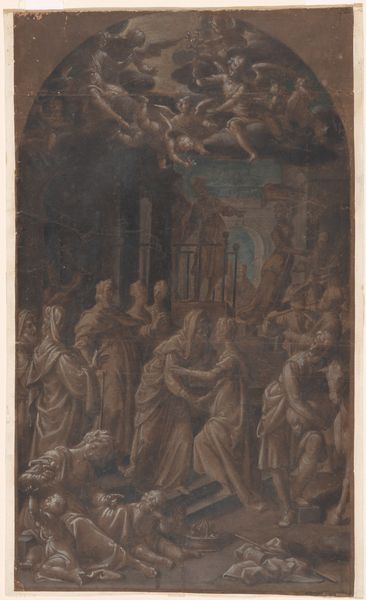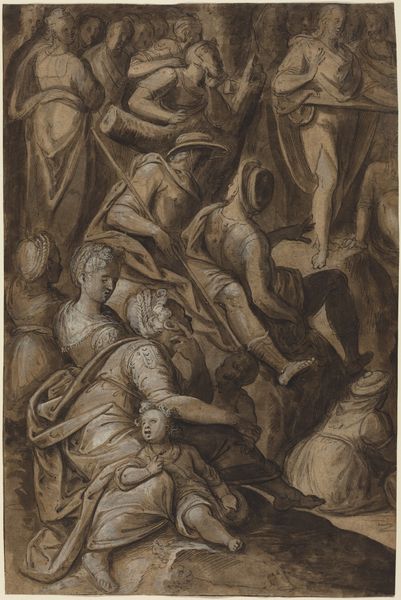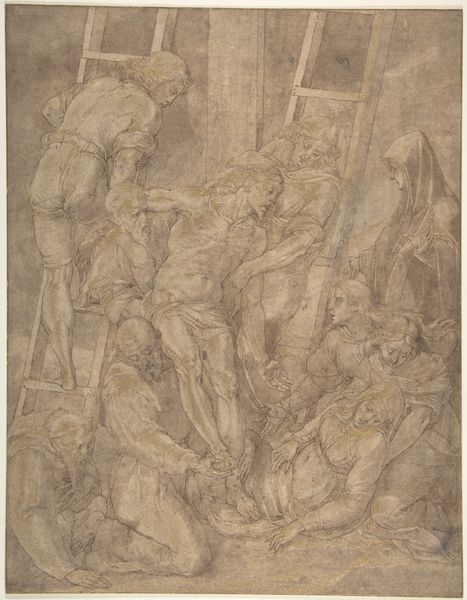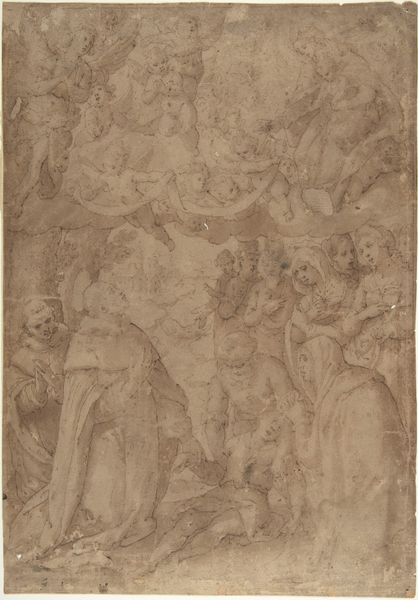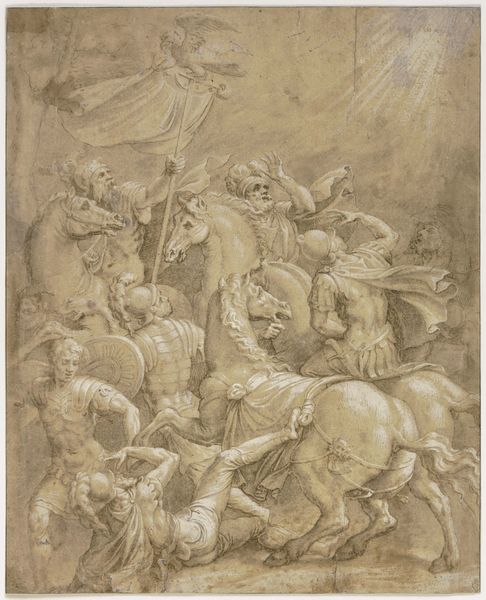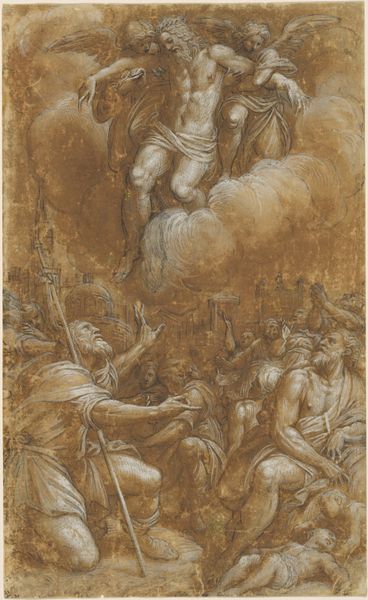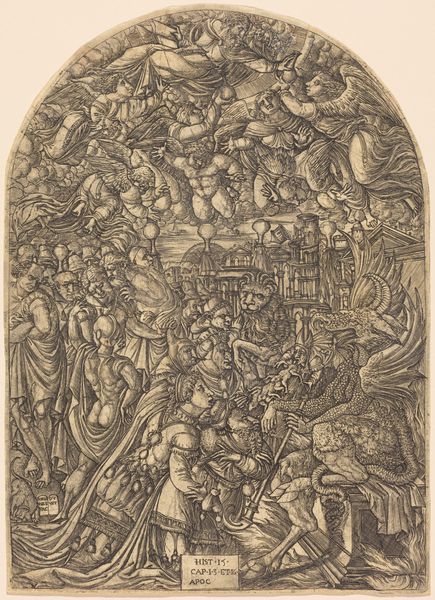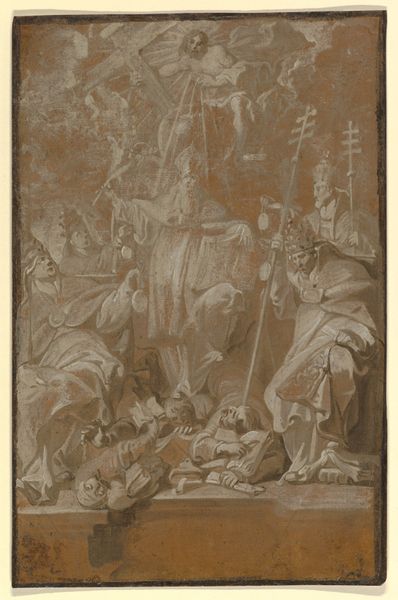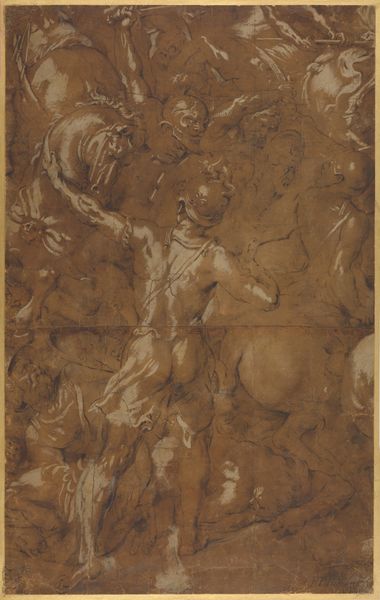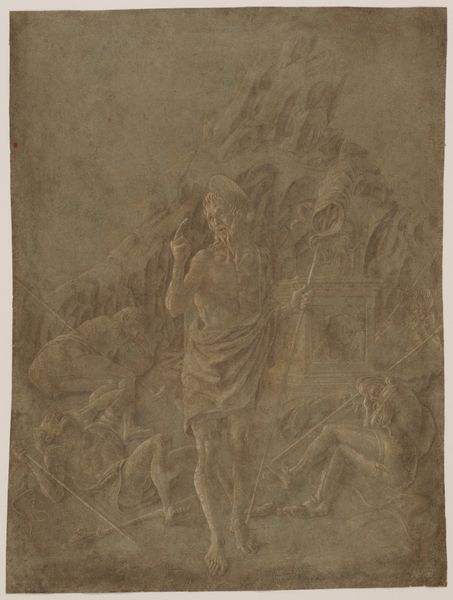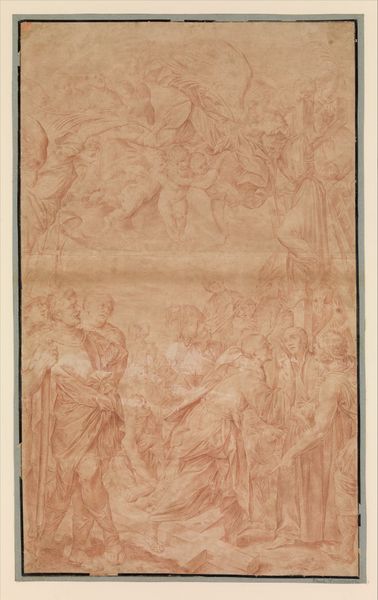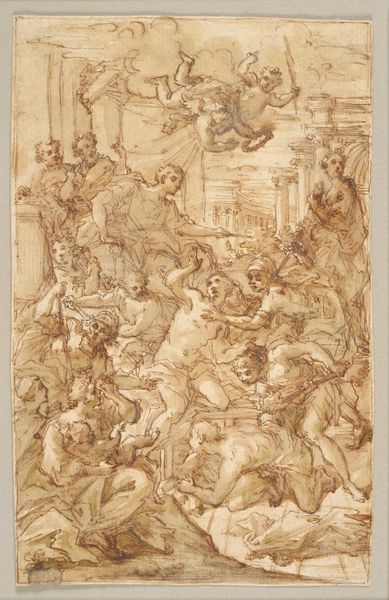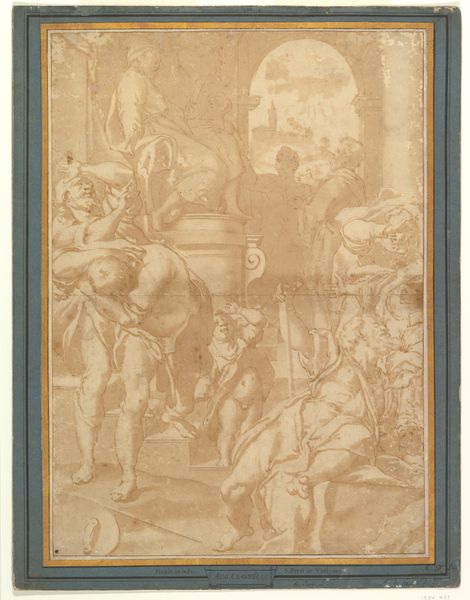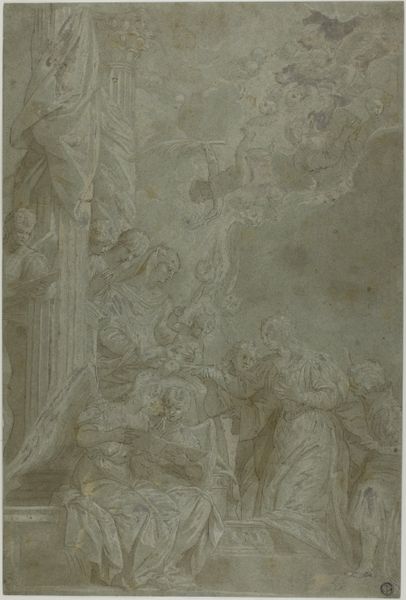
drawing, print, paper, ink
#
drawing
#
narrative-art
#
baroque
# print
#
paper
#
ink
#
genre-painting
#
history-painting
Dimensions: 19-1/4 x 15-1/4 in. (48.9 x 38.7 cm)
Copyright: Public Domain
Editor: Here we have Aurelio Lomi's "The Banquet of Ahasuerus and Esther," created between 1595 and 1622, using ink on paper. It looks incredibly busy, full of figures in motion. What compositional elements strike you? Curator: Notice how Lomi constructs space not through linear perspective alone, but through the density of figures and the contrast between light and shadow. Consider how the architectural framework of columns and arches, while seemingly classical, is employed to compress the scene, intensifying the drama. What purpose might this serve? Editor: To create a sense of urgency, perhaps, or even claustrophobia? There's very little negative space; everything seems crammed together. Curator: Precisely. Note how Lomi manipulates the viewer’s gaze using directional lines created by the figures’ gestures. The hands, the gazes - they guide us through the dense crowd towards what appears to be the focal point, yet this is obscured, isn’t it? Where do you find your eye drawn, and why? Editor: I'm drawn to the right, to the figures with what look like crowns; they're slightly brighter, but partially cut off. The use of the sepia ink, too, creates a sort of tonal unity across the entire drawing despite all the activity. Curator: Yes, the monochromatic palette binds the diverse elements. We should also consider the dynamism achieved through the contrasting textures - the smooth, almost porcelain quality of some figures against the rougher hatching used to create depth and shadow elsewhere. Lomi masterfully employs these variations to enhance the overall effect. How does Lomi's ink application alter your perception of the figures? Editor: It gives them a very energetic, Baroque feel; very dynamic, less posed, like a snapshot of a moving event rather than a staged tableau. I see now how the artist compels the eye. Curator: Indeed. By analyzing the visual components, we can understand Lomi's capacity to evoke emotion and drama through the very language of line, tone and texture. It truly shapes how one engages with narrative.
Comments
No comments
Be the first to comment and join the conversation on the ultimate creative platform.
